Text and photography by Gembong Nusantara
It is mid-December, and high up on the Ijen volcano rain drizzles and cuts through the thick, cold fog. Two miners emerge from the gloom carrying a goat suspended by its ankles from two poles. Near a miner’s cabin more than two kilometres up the mountain, another man deftly digs a hole and slides a wooden slab over it – this is where the goat will be slaughtered and offered as a sacrifice to ask that the 1978 tragedy not be repeated. After a short prayer, a Muslim cleric wielding a large blade brings the weapon down upon the animal’s neck. With skilled hands, the goat is skinned and its decapitated head is placed on a round bamboo tray festooned with other offerings.
In the centre of the volcano’s one-kilometre-wide crater is a neon-green lake encircled by reddish-green cliffs. At first glance it is a beautiful sight, as early-morning rays of sun slice through the damp atmosphere. Yet this picturesque view belies a dangerous reality: The lake’s water is highly corrosive, with the same acidity as a car’s battery acid. Welling up from deep vents come toxic sulphurous fumes that cause miners and tourists alike to cough and retch as their throats burn and eyes water.
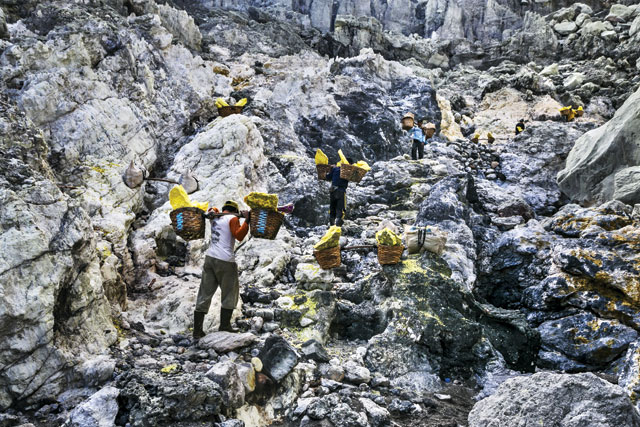
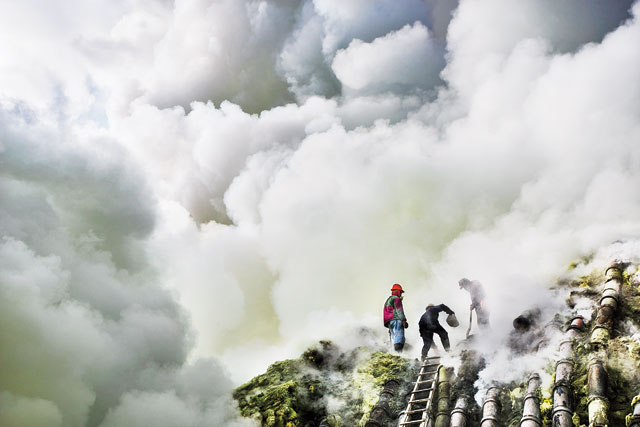
As sulphur gas – which in itself is not dangerous – emerges from the depths, it reacts with oxygen in the air to form hazardous sulphur dioxide. To get what they are after, the miners rig up a series of pipes to channel the gas. As it travels down the pipes, the gas cools and turns into a molten liquid that then forms brittle clumps of pure sulphur as it emanates from the conduits. With steel bars, the miners roughly hack at the yellow masses to form manageable chunks they can transport down the mountain to a weighing station.
Each day, the men make two or three trips to the station with loads of up to 90kg carried in baskets strapped to bamboo poles. Each kilogram fetches 780 rupiah, or around $0.07 – meagre earnings for an arduous and dangerous job that wreaks havoc on their respiratory systems. There’s nothing sweet about life on this volcano.
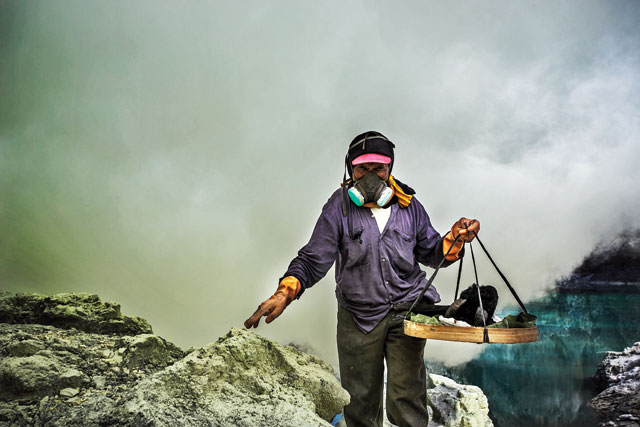
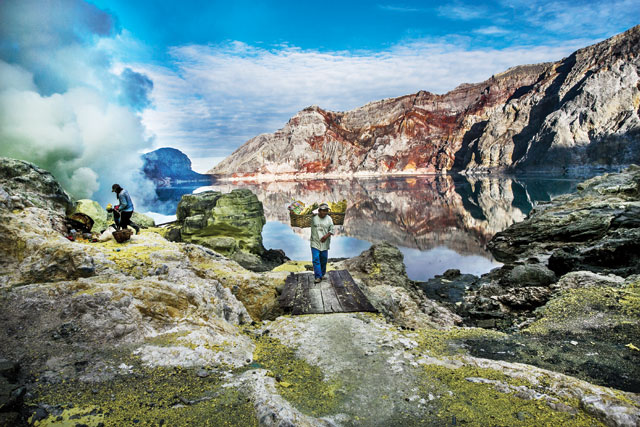
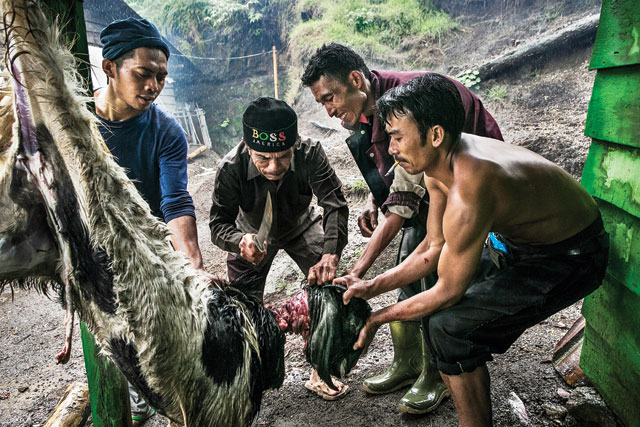
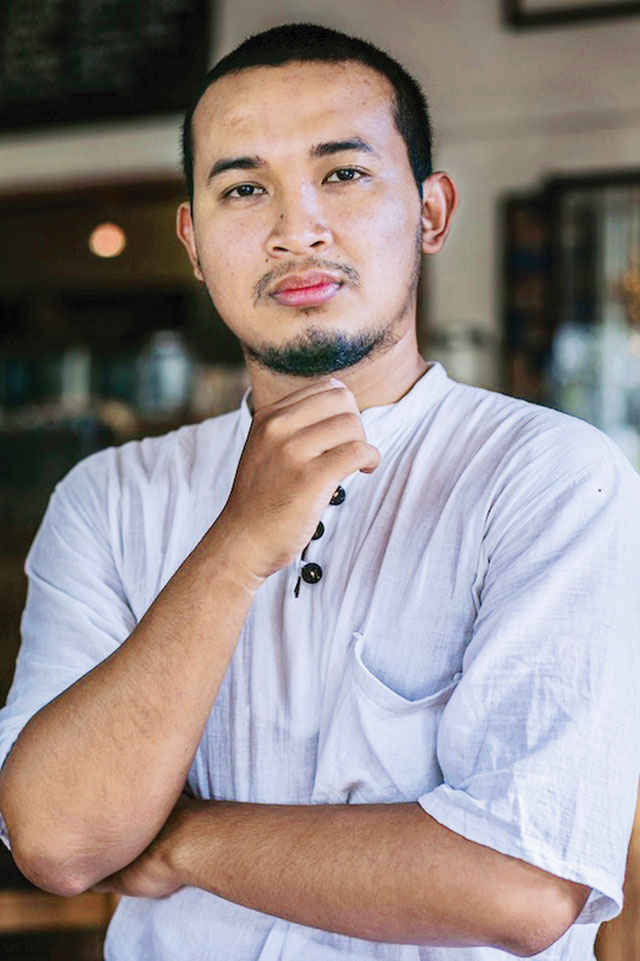
Keep reading:
“More than a woman” – In a country fraught with intolerant views towards LGBT individuals, the drag queens of Seminyak offer some light-hearted relief


